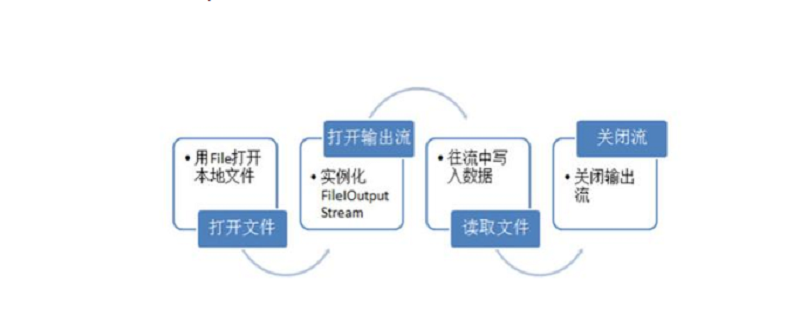Home >Java >javaTutorial >Usage of outputstream file output stream in java
Outputstream is a byte output stream in Java. It can be used to output files or strings to a new file. The method of use is: first use the File class to open a file; then use the subroutine of the stream to Class to specify the location; then perform input or output operations; and finally close "Input/Output".

Streams are used to read, write and transmit data. Input and output are for the program itself, but the program needs to read data using read Into the stream, the program needs to save the data output and use the output stream.
Streams are equivalent to various different pipes to transmit data. According to reading and output, it is divided into input stream and output stream. According to the type of transmission, it is divided into byte stream and character stream. According to the relationship between pipelines, it can be divided into node flow and processing flow.
Outputstream is a byte output stream in java, which can be used to output files or strings to a new file. See the original text for specific operations, with code explanations attached.
The output in the byte stream uses the OutputStream class and the input uses the InputStream class.
The operation of streams in java is divided into the following 4 steps:
使用File类打开一个文件 通过流的子类来指定位置 进行输入或输出操作 关闭输入/输出

Byte output stream: OutputStream
The OutputStream class is an abstract class, and its subclass FileOutputStream
import java.io.File;
import java.io.FileInputStream;
import java.io.FileNotFoundException;
import java.io.FileOutputStream;
import java.io.IOException;
import java.io.InputStream;
import java.io.OutputStream;
public class TestOutPutStream {
private static InputStream in;
private static OutputStream out;
public static void main(String[] args) {
try {
in = new FileInputStream("D:/test/testIO.java");
if(in == null){
//原文件不存在
System.out.println("原文件不存在");
}else{
//原文件存在,判断目标文件是否存在
File file = new File("D:/test/testIOO.txt");
if(!file.exists()){
//目标文件不存在,创建目标文件
file.getParentFile().mkdirs();
file.createNewFile();
}
//将原文件内容读取到目标文件
out = new FileOutputStream(file);
int a = 0;
while((a = in.read()) != -1){
out.write(a);
}
}
} catch (FileNotFoundException e) {
// TODO Auto-generated catch block
e.printStackTrace();
} catch (IOException e) {
// TODO Auto-generated catch block
e.printStackTrace();
}finally{
//流关闭
try {
if(in != null){
in.close();
}
if(out != null){
out.close();
}
} catch (IOException e) {
// TODO Auto-generated catch block
e.printStackTrace();
}
}
}
}Through practice, I found that there were files in the original D drive, and new files were generated through outputstream.

The above is the detailed content of Usage of outputstream file output stream in java. For more information, please follow other related articles on the PHP Chinese website!